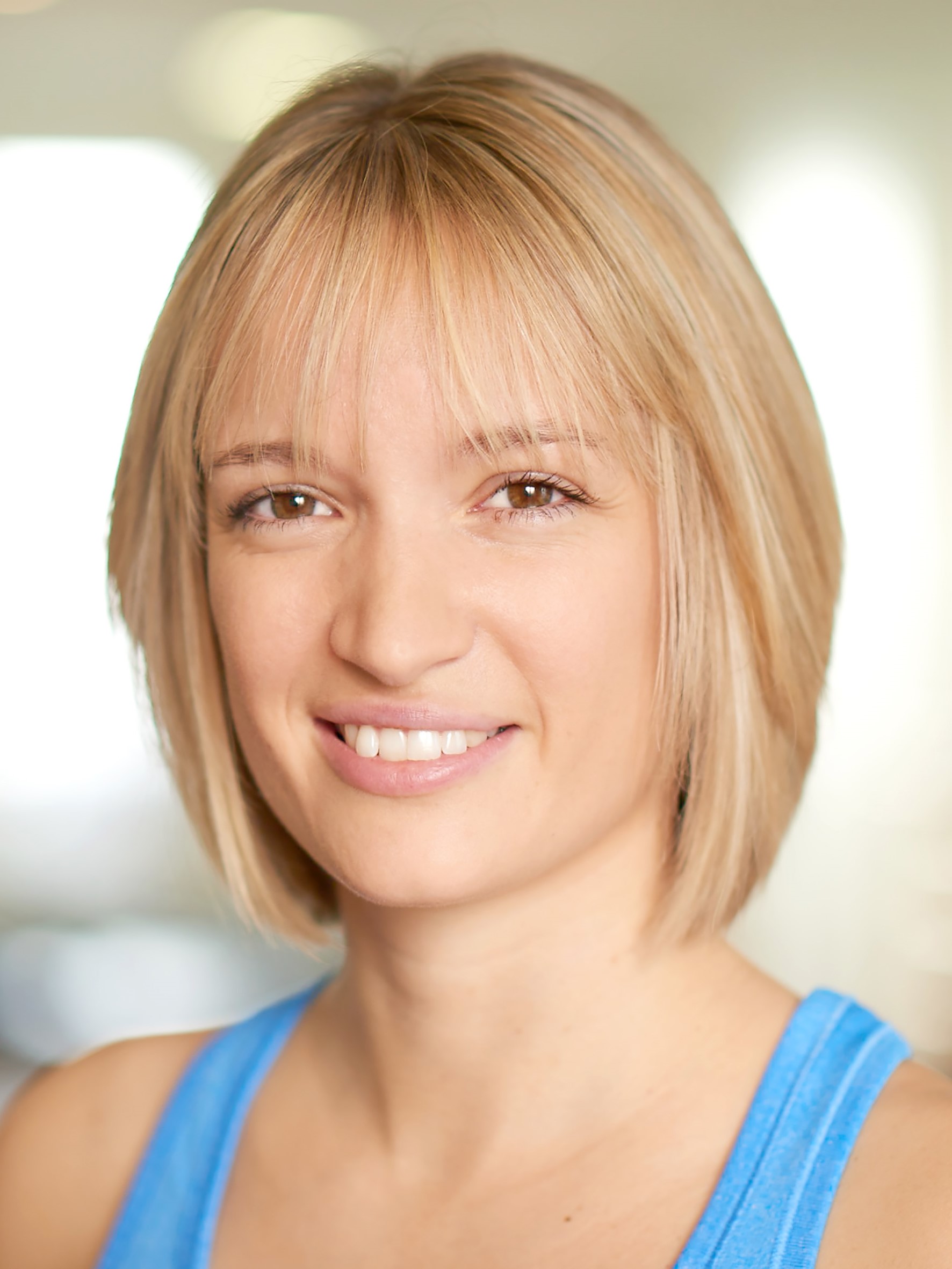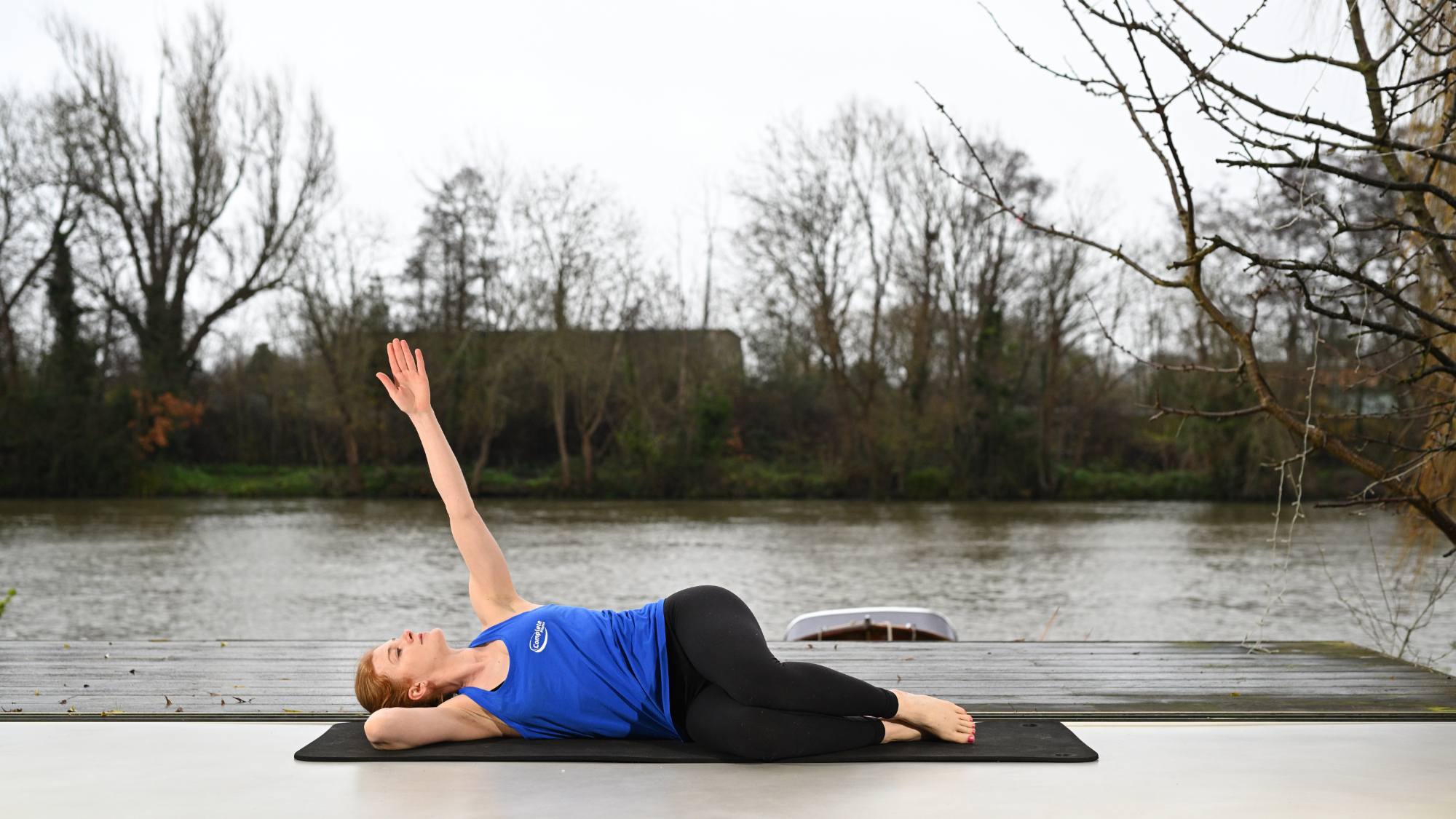A top physio recommends this stretch for a stiff upper back
Try the book opening exercise to release tension and get some mobility into your upper back

A variety of things can cause upper-back stiffness. Repetitive movements in sports such as tennis, golf, rowing, swimming and long-distance running can result in tension. Postural issues from sitting at a desk, driving for extended periods or even cycling (if you hold an aerodynamic position with your upper back) may also be the culprit. Lifting heavy weights or doing big compound movements can have an effect, and carrying a baby or breastfeeding can also take a toll.
That list covers a lot of people, so how do we relieve the stiffness that plagues nearly all of us?
"The book opening exercise is a great one for opening the chest and alleviating upper-back stiffness," says Helen O'Leary, physiotherapist and founder of Complete Pilates. "It brings movement to the front, back and side of the body with spinal rotation and extension. You'll get a lot more mobility. It's a brilliant movement because it can be used by almost anybody, and importantly, it should feel nice."

Helen O'Leary is a chartered physiotherapist with a background in elite sports. She trained with Polestar Pilates and in 2015 she founded Complete Pilates, a rehab-focused Pilates studio with three central London locations.
How to do the book opening stretch
Reps: 5 each side
- Lie on your side with your hips and knees bent, your head supported by a block or a pillow, and your arms extended together along the floor in front of you.
- Keeping your hips and knees together, reach your top arm up and behind you as far as is comfortable, turning your head to follow your hand with your gaze and letting your chest rotate to face up.
- Press your knees together to resist the pull of your rotating torso—this should stop you from just rolling onto your back and give you a greater stretch through the obliques.
- Gently reverse the movement to return to the starting position.

Movement tips
"I would allow the hips to roll back just a little bit because then you get full spine mobility and by loosening up the lower back you will also get more of a stretch in the upper back," says O'Leary. "So it's not like your hips end up facing up towards the sky but there is a slight tilt backwards. Press your top leg down into your bottom leg and almost slide that knee forward slightly because that will keep your hips from rotating too much."
"At first you can just move in and out of the stretch, so your body gets used to it," says O'Leary. "Then as you start to get used to it, you might hold it for two or three breaths."
Start your week with achievable workout ideas, health tips and wellbeing advice in your inbox.
Don't worry if your arm doesn't reach the floor behind you. How far you can go just depends on how naturally mobile your shoulders are. Touching your arm to the floor is not the aim of this exercise, however, you can try propping your arm up with some pillows to allow you to relax into the stretch.
"If you're fighting the stretch, your muscles will contract and will try to pull you up and you'll never fully relax into it," says O'Leary. "By giving yourself the support to let go in that position, you will be able to get a bit more of a deeper stretch."
What does the book opening exercise stretch?
This rotation and extension movement stretches almost every muscle on your torso.
"You'll feel a release in the muscles around your spine from the base of your spine to your neck, your deep spinal stabilizers and around the ribs where they attach into the mid-back. Also around the shoulders, chest, obliques, abdominals. You'll also feel a lot of release in your hips and around your pelvis," says O'Leary.
"Everything from your tummy button on the front, all the way round to your spine on the back, everything stretches and opens up, which is why it feels so good."
Book opening exercise modifications
There are lots of variations for your arm position—experiment and find one that feels good.
"You can slide the top arm across your chest like you're firing a bow and arrow, and then extend the elbow—that will give you a lot more mobility and support. Or you can draw a circle over your head with your arm. To come out of the stretch more gently, bend your elbow before bringing your arm back across your body."
"If the stretch feels too intense, instead of extending your arm, bend your elbow and place your hand behind your head," says O'Leary. This allows you to control the movement from your elbow.
It's also common for this stretch to feel different on each side. "Most people are asymmetrical and that's not a problem at all. It might mean you need to spend a bit more time on one side than the other, give yourself a bit more support and do a few more reps. You don't have to do the same number on each side. Just do it until you feel like you've given yourself enough and then move on. That might be one or two on some days. On other days it might be five or six and it could be different on each side."
This stretch isn't ideal when you're pregnant, but there are modifications if you've developed a soft spot for it before conceiving.
"As you get towards your third trimester that extension-rotation can create a little bit more of a stretch across your linea alba, which then leads you to diastasis, that slight separation of the abs," says O'Leary. "Instead, you can do either a seated version or a version down on one knee with one foot on the floor in front of you."
For more tips on how to limber up at the end of the day and boost your mobility, read through our guide to the best hip stretches and try these hip-strengthening exercises.
Need something supportive for your stretching routine? Have a look through our guide to the best yoga mats
Camilla Artault is a fitness writer with a passion for running and yoga. She interviews experts and writes about a wide range of topics for Fit&Well encompassing health, fitness and nutrition.
